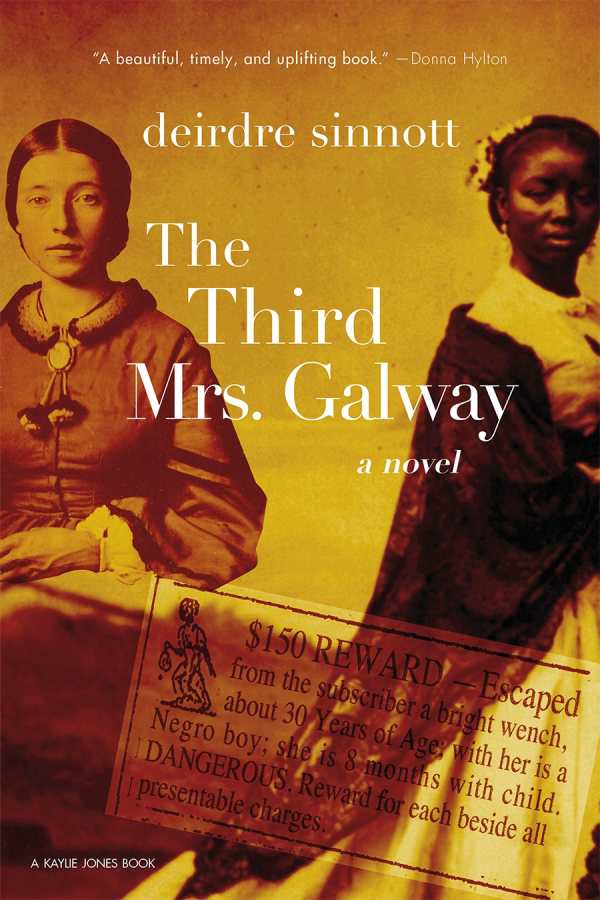The Third Mrs. Galway
Deirdre Sinnott’s potent historical novel The Third Mrs. Galway covers the early abolitionist movement in New York via the story of a multidimensional family.
Helen is young when she marries Augustin Galway, an older financier who’s the descendant of a slave owner. On her husband’s property, she discovers a pregnant runaway, Imari, and her son, Joe, in hiding. Having been taught twisted interpretations of Bible verses that painted runaways as disobedient, Helen is shocked to hear Imari’s account of what slavery is actually like. Still she’s ambivalent about helping. From this volatile opening, an intriguing story about moral duty, women’s strength, personal reckonings, and communities unfolds.
The book’s descriptions are brutal, urgent, and realistic. Oneida County’s river landscapes stand out, with descriptions of the industry on its canals, where the water is beautiful, treacherous, and full of potential. These images parallel the characters’ stories in subtle ways. Some tales conclude with death; other characters migrate.
As Helen awakens, moving from feeling inconvenienced by the runaways to risking her safety to keep slave catchers away from them, her story is interspersed with Imari and Joe’s recollections about their pasts and travels northward. Meanwhile, controversy over an impending antislavery convention reveals the Northern community’s divisive antebellum sentiments.
Secondary characters, including a free-born Black fishmonger whose challenges to others prompt tough choices, and the Galway’s influential cook, whose backstory is key to the book’s resolution, have warm interactions that flesh out the story. Augustin, who is limited by an injury and his opium addiction, is more of a background figure in comparison, though his secrets lead to a late, unexpected act of atonement.
In the intricate, relationship-based historical novel The Third Mrs. Galway, characters question civil disobedience and abolitionism; they also learn to be compassionate.
Reviewed by
Karen Rigby
Disclosure: This article is not an endorsement, but a review. The publisher of this book provided free copies of the book to have their book reviewed by a professional reviewer. No fee was paid by the publisher for this review. Foreword Reviews only recommends books that we love. Foreword Magazine, Inc. is disclosing this in accordance with the Federal Trade Commission’s 16 CFR, Part 255.

